Continuing the explorations of Thunderbird (2021), Potential Difference further investigates the integration of smart textiles and energy production within fashion design. Smart textiles are on the rise, seeing increased use in various and distinct fields. From high fashion to space technology; from virtual environments to medical devices: human beings are integrating increasingly further with their digital environments. Smart textiles are part of the next phase of enhanced internet-of-things devices and capabilities.
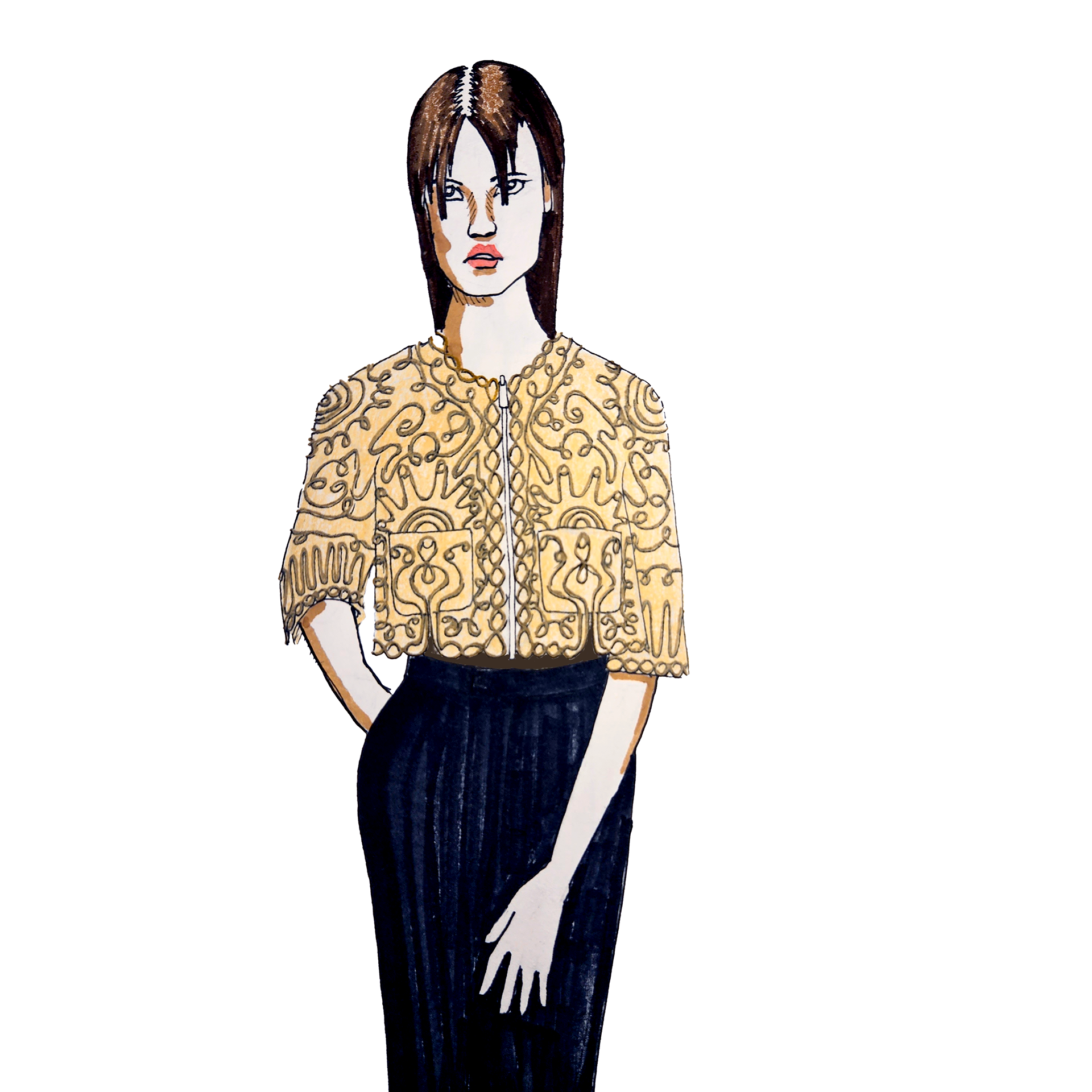

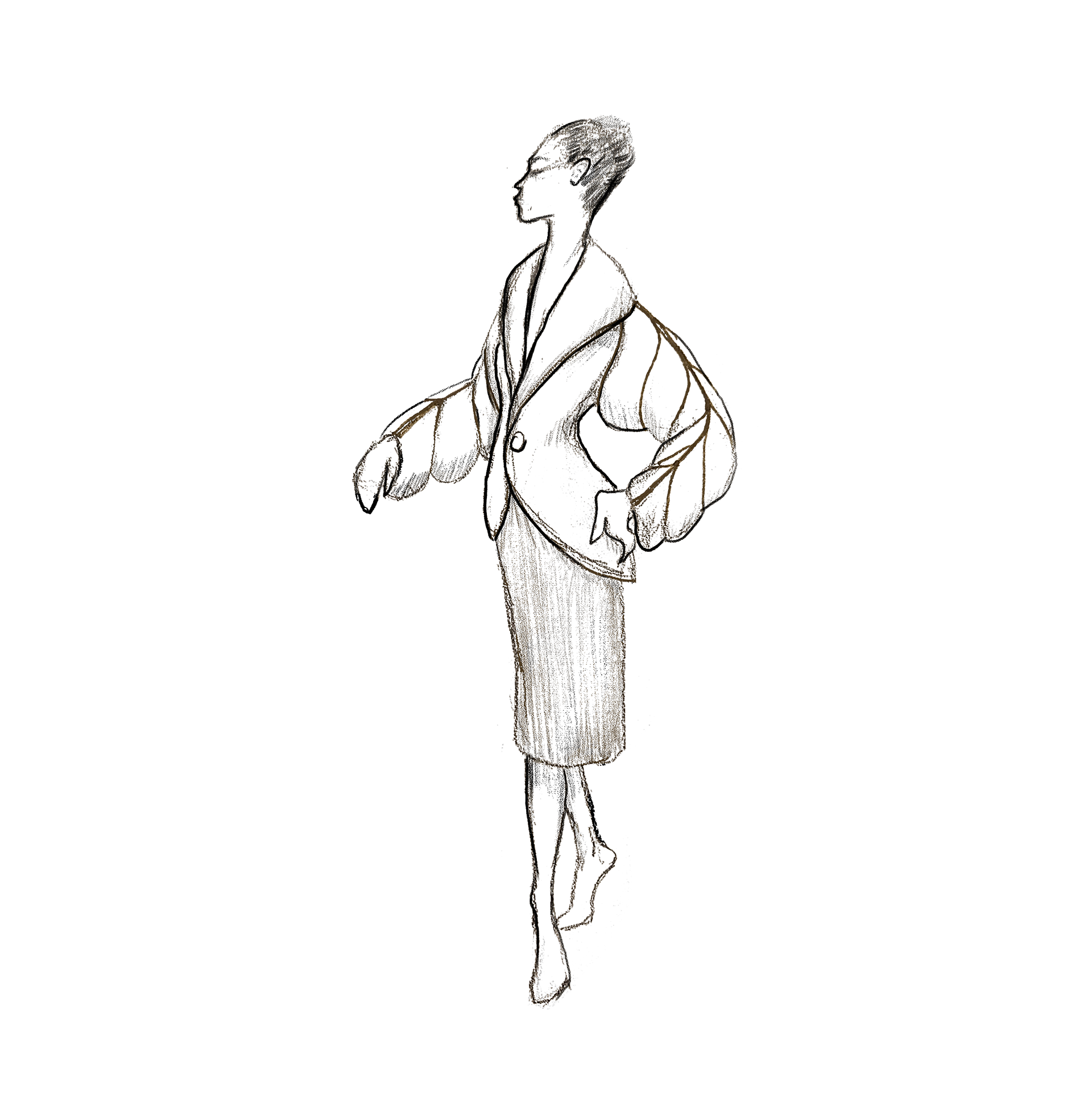
Self-Powered Smart Fabrics for Wearable Technologies (2022) by Dr. Fatemeh Mokhtari inspired me to think about the incorporation of smart textiles into fashion design. In collaboration with Dr. Mokhtari, I explored a piezoelectric braid she developed. Actions like bending or twisting cause the layers of the braid to engage with one another and produce a small voltage, effectively converting mechanical energy into electricity.
The function of the braid provides a succinct design goal: maximize energy output. That means developing designs that integrate the braid to maximize its exposure to abrasion, torsion and other natural movements of the wearer. We can predict these zones based on the intended usage of the garment. In standard streetwear or couture, movements tend to be more restrained and are focused around activities like walking, sitting, standing and reaching for things.
The successful integration of this technology in fashion design is found where energy production is maximized given the expected usage of the clothing. Considering this, I explored several potential usage cases that would benefit from the use of this technology.
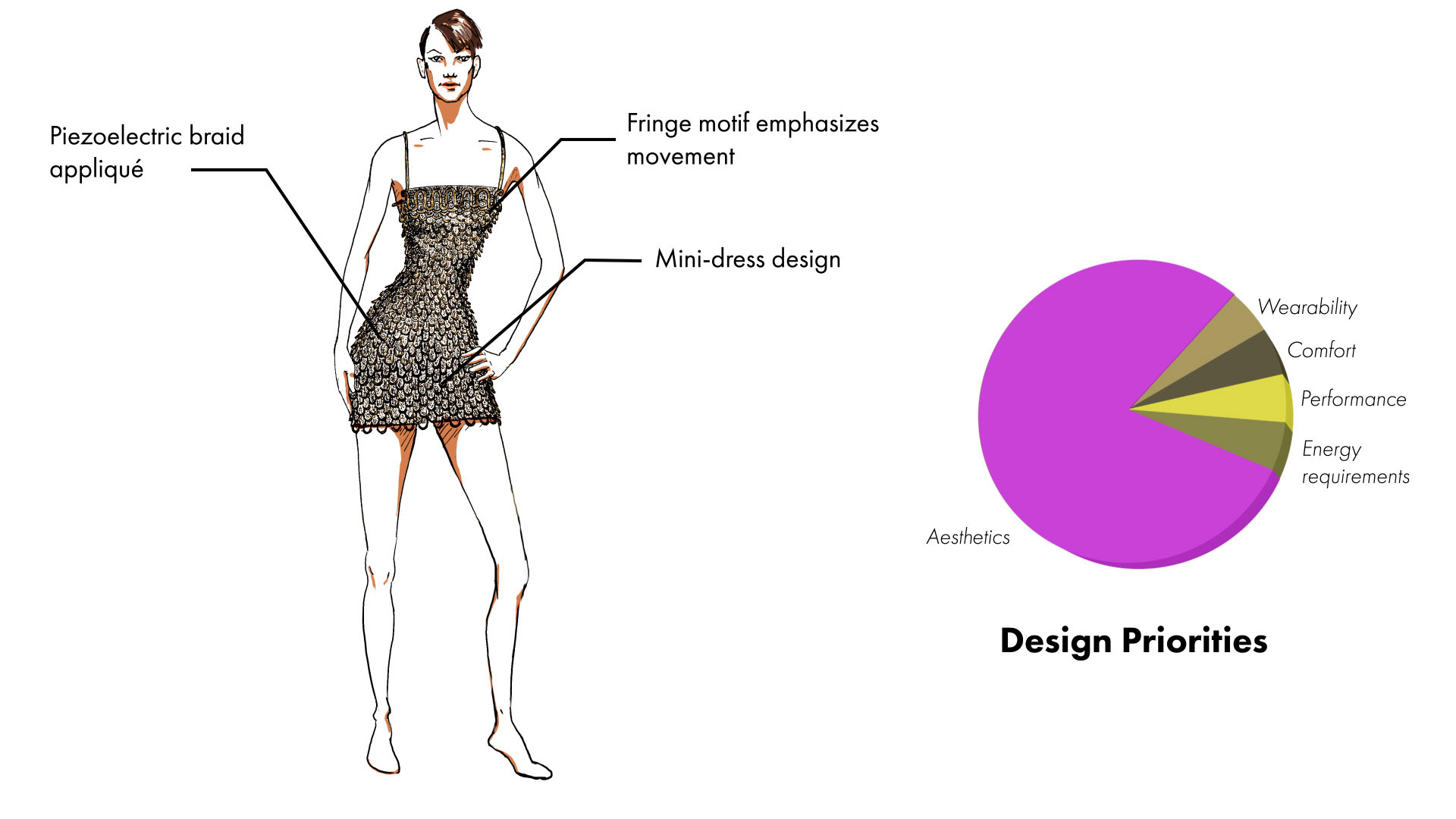
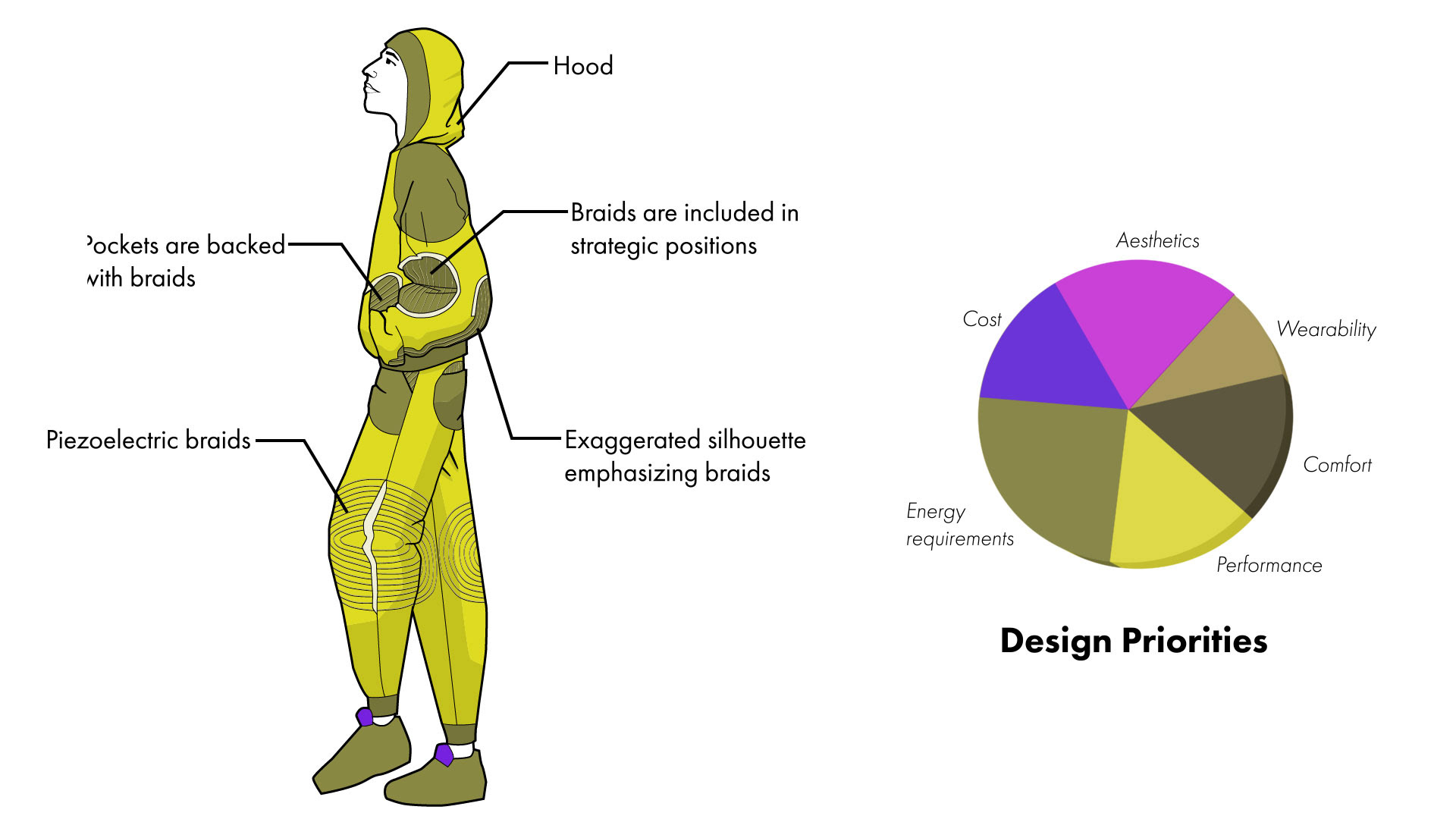
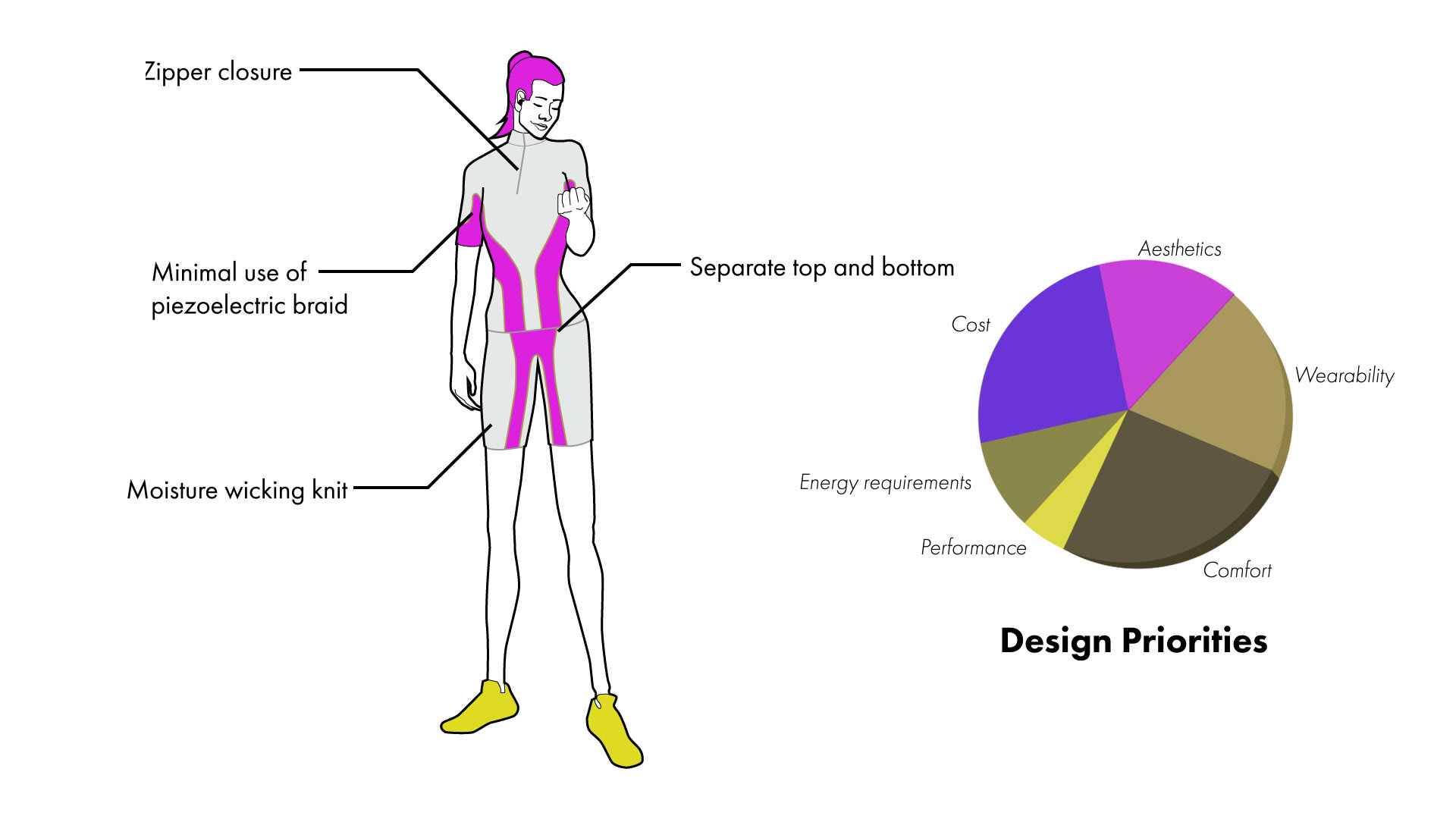
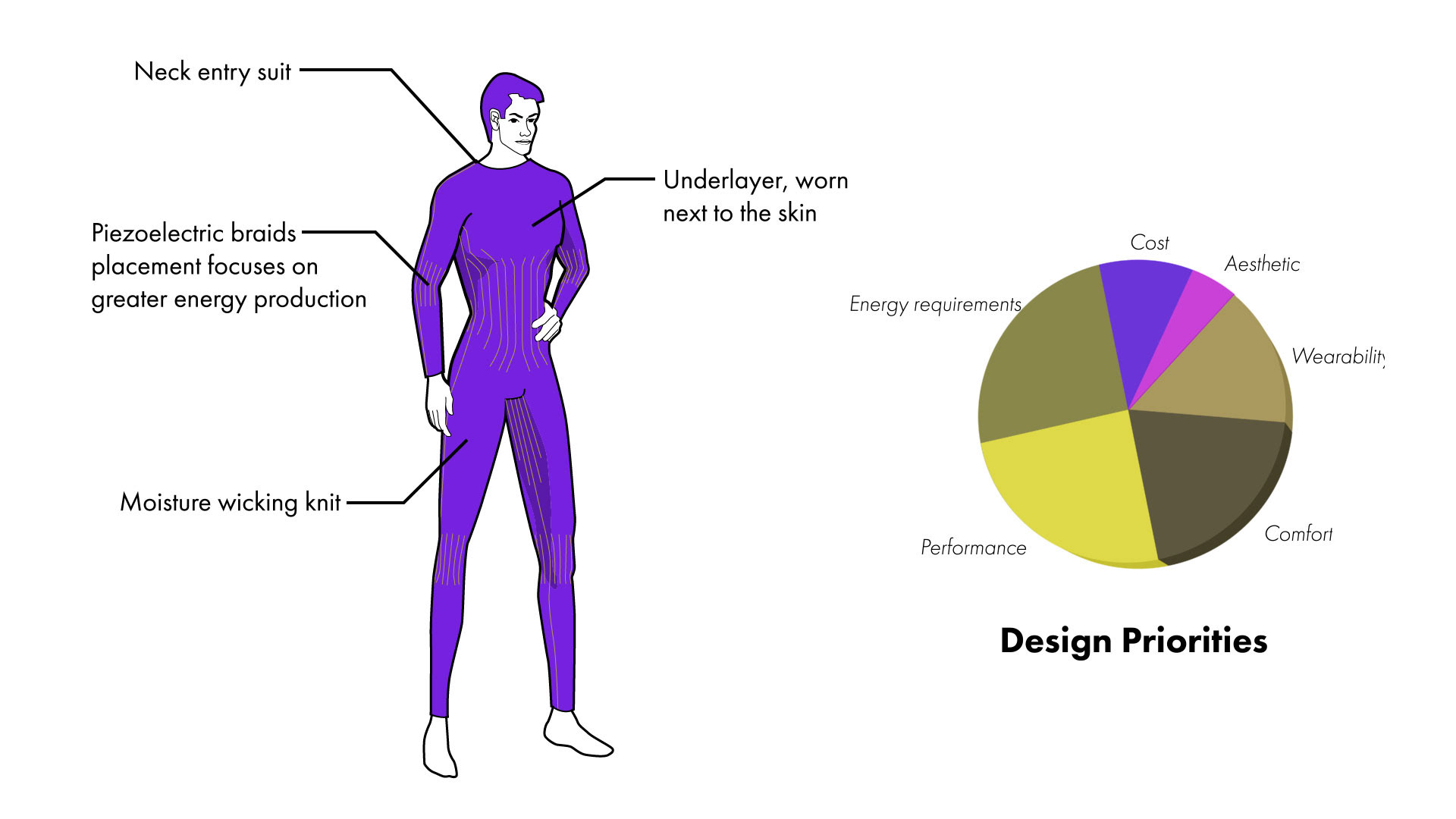
Dr. Mokhtari provided a sample of the braid to test in a real physical garment. With a limited quantity available to me, I opted to design a glove that could test the capabilities of the braid and to test the optimization of the braid within the design.
I identified a suitable method for attaching the braid to fabric using a diagonal stitch over the braid. This avoided penetrating the layers of the braid and introducing points of short circuit. The prototype glove demonstrates the capabilities of the technology, both in performance and aesthetics.
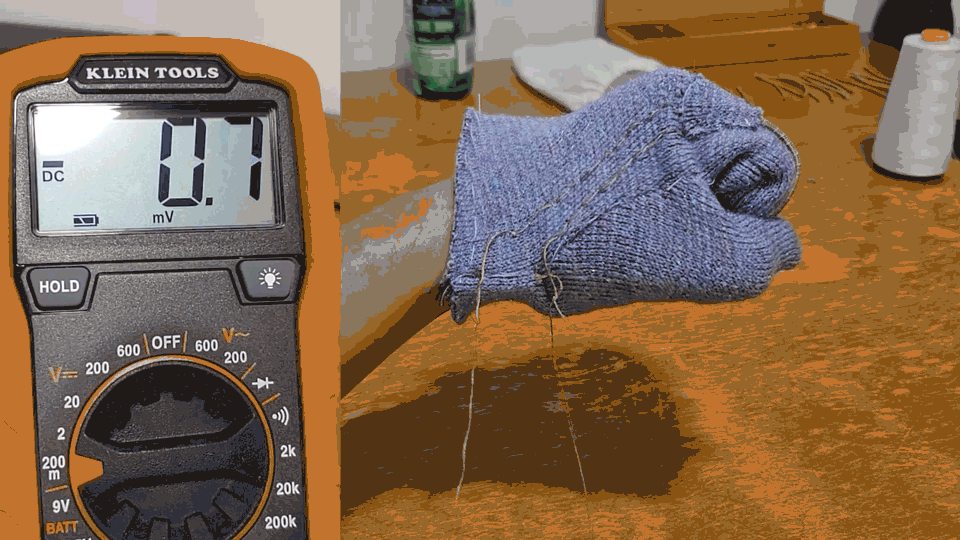
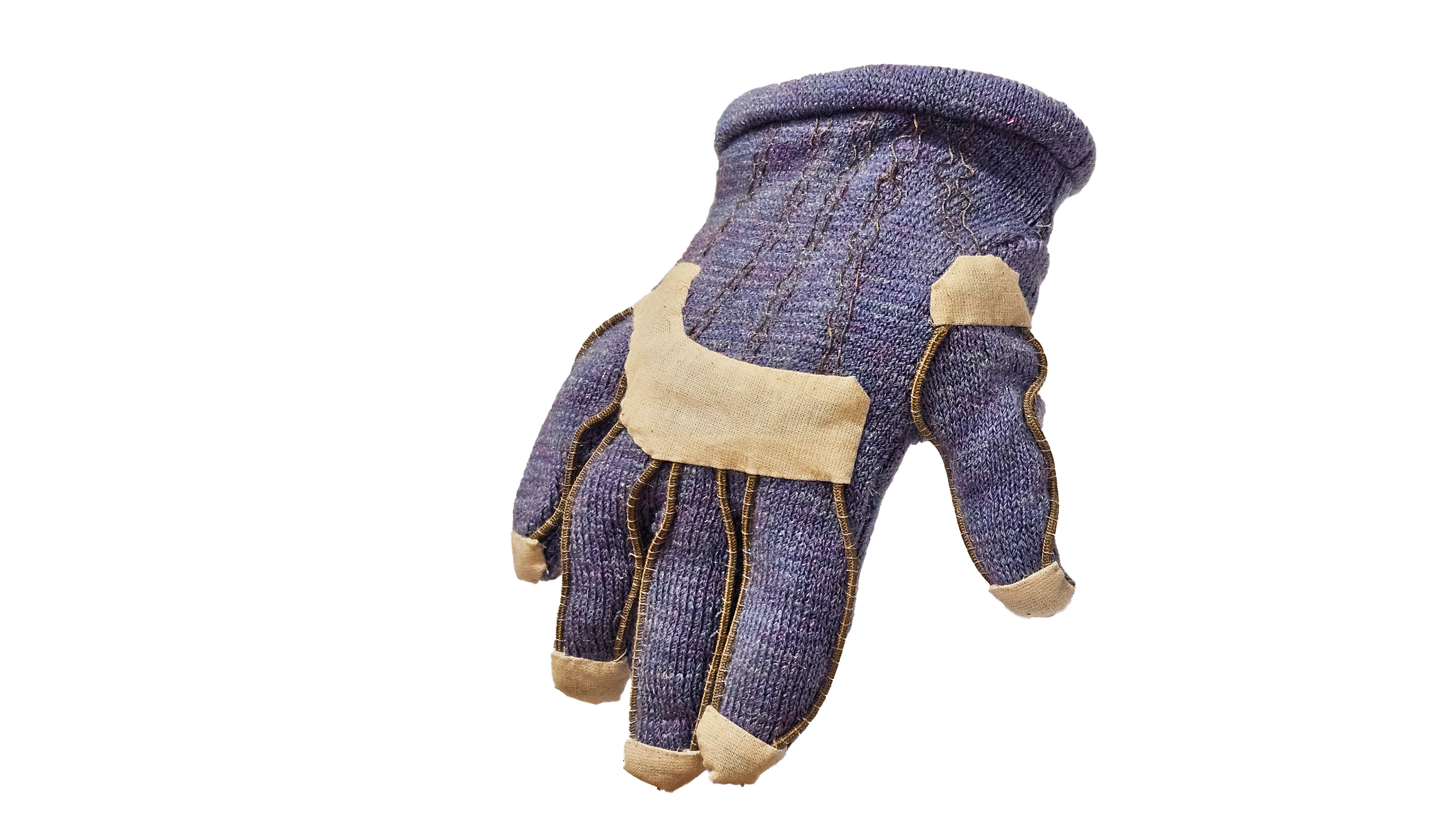
The next generation of clothing will provide enhanced inhabitation, fulfilling more of the needs of the wearer. As our technology continues to progress, embracing it within the field of fashion will help to address challenges around sustainability by making our clothing more critical to the daily needs of users and less reliant on frivolous trends. As development of smart textiles continues to progress, fashion designers have an opportunity to contribute their expertise to help researchers
build better products. This project is presented in video format below.
build better products. This project is presented in video format below.